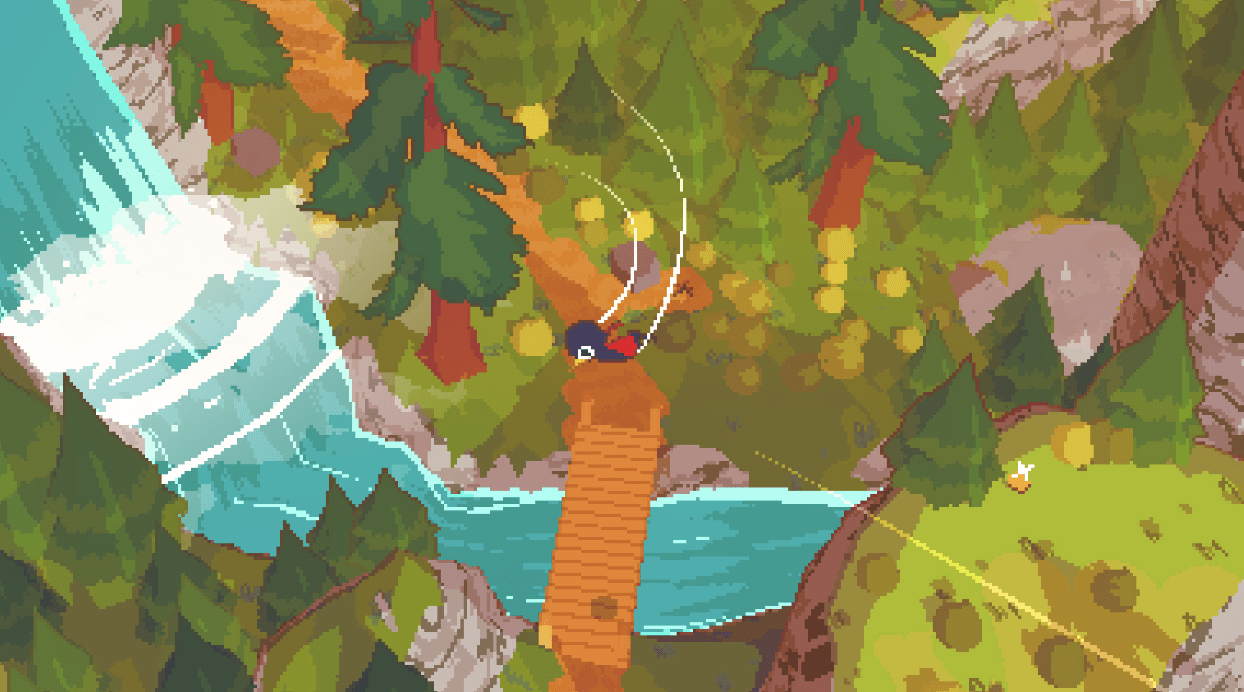 I played ‘A Short Hike’, by Adam Robinson-Yu, on the Nintendo Switch (although it’s also on PC).
I played ‘A Short Hike’, by Adam Robinson-Yu, on the Nintendo Switch (although it’s also on PC).
Although it’s accessible to just about anyone, with very simple mechanics, I think the target audience is people who like chill indie games, and are probably at least somewhat familiar with similar titles. It very much builds on existing walking sims.
Formal Elements:
Your goal is to take a short hike to the top of a nearby mountain – it takes a couple hours.
You verbset (i.e., the procedures) is fairly small: walking, gliding, climbing, digging and fishing. Players unlock golden feathers by completing challenges and exploring. With those feathers, they gain the ability to climb and fly further, and get higher up the mountain. This creates a tidy loop – explore, upgrade, and then explore the sections you couldn’t before.
Types of Fun:
The main types of fun are exploration – exploring the island, narrative – learning about the islanders, and your PC, sensation – the act of flying especially!, and, unlike most games we’ve played, abnegation – this game is perfect for just gently existing with and walking around a nice island doing nothing. It’s enormously cozy.

Although its name is an explicit nod to the genre, a Short Hike changes some of the conventions. There is still a story to uncover, but it appears mostly as small encounters with a variety of characters and doesn’t really focus on a single narrative thread. Instead, the game creates a nice place to exist in, and gives you traversal options that make it fun to just noodle around. I think this is a great change for the genre – although the limitations on movement in games like Firewatch or Tacoma lend themselves to the pace of the story, this wider verbset lends a greater feeling of agency than those games.
It also helps keep the game itself engaging. If you want, you can take a break from gliding to collect seashells, or fish, or dig up flowers, which helps keep propelling things forward.
The flipside of this is that many of these alternative activities can sometimes feel shallow. None of them individually are especially compelling, and they tend to reduce to ‘wander the map looking for a thing’. While this does encourage the player to fully explore the movement, which is ultimately the main draw of the game, it can get repetitive. I think either varying the mechanics more, or tying these tasks into slightly larger stories, could help.
I think there’s also some tension between the movement mechanics, which work like a Metroidvania-lite – unlocking mechanics to access new areas – and the core conceit of taking a relaxing hike. I had some moments where I ended up getting stuck and having to scour the island for a seashell, which was the opposite of relaxing. I think having more flexible barriers to progression could alleviate this, or making these objectives more clearly secondary.


